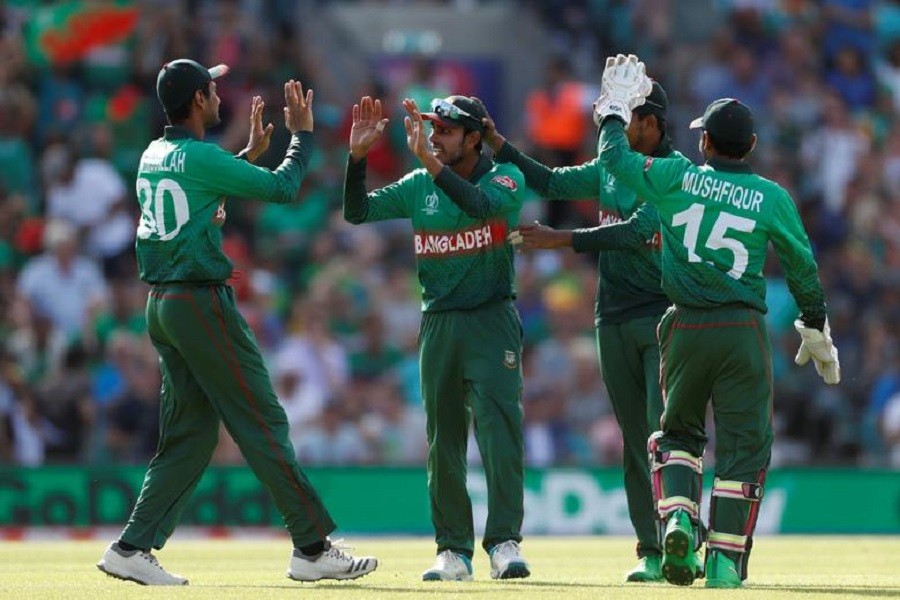
Published :
Updated :

The inauguration of T20 in the global arena, experimentation of T10, six a side, and ‘The Hundred’ – all these innovations within cricket in modern times are meant for shortening the game to make it less time-consuming and more intriguing. Critics have been vocal about this, saying the globalisation of T20 is hurting the purest form of the game, i.e. Test cricket, but to no avail. Some suggest international sides are more inclined to play T20 fixtures than ODIs since the broadcasters prefer the former due to higher viewer engagement. All these converge on one question: Is T20 cricket making the longer version less relevant?
Although criticised, T20Is are very important for the expansion of the game. Should the International Cricket Council (ICC) seek to spread the game all over the world, T20 can be the go-to format. This format can allow not only the teams with limited skill sets to compete, but also the spectators from those regions to engage.
The decision of providing all 104 members with T20 status in 2018 has been an epoch-making one in globalising the game. One year after this decision was implemented, the then ICC General Manager Development William Glenwright said, “We are committed to growing cricket globally and we clearly identified T20 as the vehicle through which to do this. We are incredibly proud of what our Members have achieved during 2019 and credit must go to every Member who seized the opportunity presented to them to accelerate the growth of our game in their respective territories.”
Indeed his words are backed by statistics. There is an increasing engagement from fans in the associate countries with 128 million digital video views for ICC qualifying events in 2019 and more than 80 million views for the ICC Men’s T20 World Cup Qualifier in October last year.
Furthermore, the expansion of franchise-based leagues can also prove to be instrumental in inspiring a generation of cricketers in any given country. Nepalese cricketer Sandeep Lamichhane, for instance, playing in different leagues around the globe is certainly a big inspiration for the young generation of Nepal to take cricket as a profession. These facts sum up the importance of uplifting this format on a large scale.
Having said that, trading off T20 internationals with Tests and ODIs is not acceptable either. According to the Federation of International Cricketers’ Association’s (FICA) Men’s Professional Cricket Global Employment Report 2020, 82 per cent of the players interviewed by FICA believed that Test cricket is certainly the most important format. Moreover, ODI is another highly established format among the top and mid-tier cricket playing nations. Therefore, maintaining a balance between all three formats is a must to ensure cricket’s both purity and diversity as well as globalisation.
At the early stage of T20 internationals, this format used to secure its pie from that of the Test matches only. In 2003, a time when T20I was not in action, 77.55 per cent international fixtures were ODIs while 22.45 per cent were Tests. However, in the year 2007, when the first T20 world cup took place, T20Is accounted for 14.29 per cent of the fixtures which reduced the pie of Test matches to a half with a percentage of 11.65.
However, with time, ICC has put emphasis on preserving the purest form of the game. ICC has made sure that the pie of Test cricket does not get affected too significantly, courtesy of the expansion of T20s. Results of this effort are visible as the share of Test cricket has been steady throughout the last decade – slightly over 18 per cent of the total games in 2011, 2016, and 2018-19.
The preservation of Test cricket and the expansion of T20Is necessarily mean that the ODI format is expected to experience a dip. Once ODIs used to account for a lion's share of the fixtures. But with the upsurge of T20Is, it came down to as low as 41 per cent in 2016. Ever since, ODIs have also been under observation so that the percentage of such games does not deteriorate even further. Results are apparent here too with almost 50 per cent of the games of the 2018-19 season being ODIs.
To ensure all these three formats go hand in hand in future as well, ICC has, of course, clear plans – The idea of World Test Championship and ODI Leagues for World Cup qualification is instrumental in upholding the significance of every game under these formats along with enhancing participation of every nation playing the game. Similarly, a T20 World Cup in every two years is also significant in expanding the game across the globe. To sum it up, all the three formats are on course for maintaining a perfect balance among themselves.
Ahmed Tanvir is currently studying at the Institute of Business Administration, University of Dhaka (IBA-DU). He can be reached at tanvir2575@gmail.com


 For all latest news, follow The Financial Express Google News channel.
For all latest news, follow The Financial Express Google News channel.